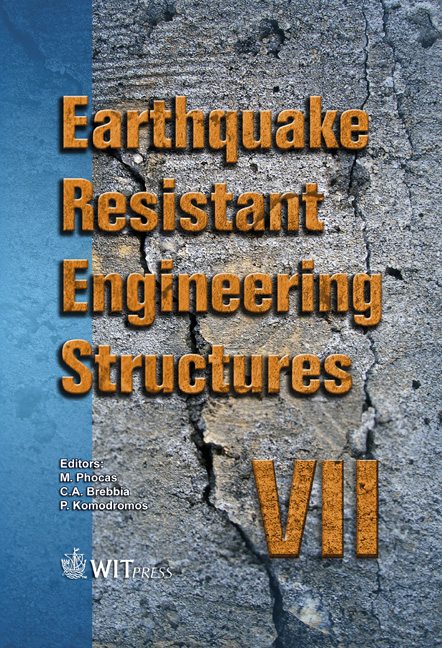3-D Analytical Method For The Discontinuous Behaviour Of Large Dams Against Surface Earthquake Faults
Price
Free (open access)
Transaction
Volume
104
Pages
10
Page Range
3 - 12
Published
2009
Size
658 kb
Paper DOI
10.2495/ERES090011
Copyright
WIT Press
Author(s)
Y. Ariga
Abstract
Confirmation and the securing of safety against a surface earthquake fault is an important subject for long and large structures, such as dams, tunnels, railways, highways, and so forth. About 100 years ago, several dams constructed along the San Andreas Fault were damaged by surface fault displacement during the 1906 San Francisco Earthquake. Recently, the Shih-Kang Dam was destroyed by surface fault displacement during the 1999 Taiwan Chi-chi Earthquake. As for the seismic safety evaluation against strong earthquake motions, many analytical methods have been practically developed thus far. However, the analytical method for evaluating safety against fault displacement has not yet been established. We have devised an analytical method for evaluating the discontinuous behaviour of concrete dams by applying the 3-D dynamic analysis method for the coupled dam-joint-foundation-reservoir system. The applicability of the method proposed in this study was examined by the analyses for the concrete gravity dam. Keywords: fault displacement, 3-D dynamic analysis, discontinuous behaviour, concrete dam, seismic safety. 1 Introduction The Upper Crystal Dam (earth-fill, height 23m), the Upper Howell Dam (earthfill, height 11m), the Old San Andreas Dam (earth-fill, height 8.5m) and so forth, which were constructed along the San Andreas Fault, were damaged by fault displacement during the 1906 San Francisco Earthquake [1, 2]. The Shih-Kang Dam (concrete gravity, height 25m) was destroyed by the vertical relative
Keywords
fault displacement, 3-D dynamic analysis, discontinuous behaviour, concrete dam, seismic safety.





